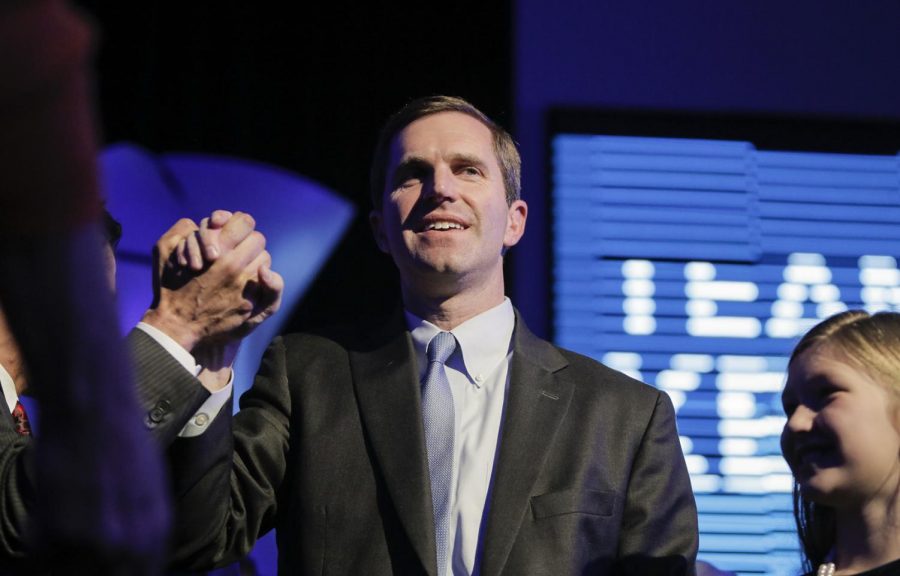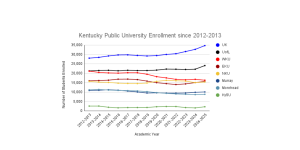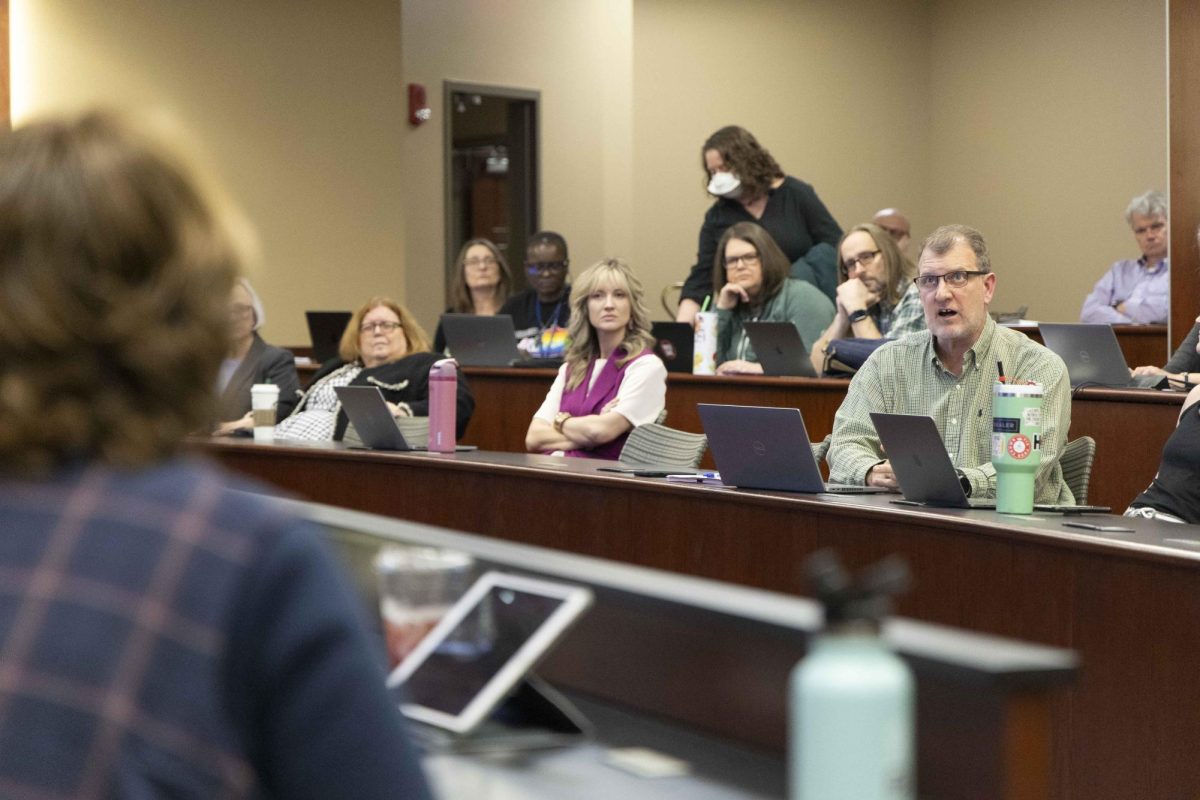Beshear’s budget address emphasizes ‘education first’
February 4, 2020
Gov. Andy Beshear’s budget address on Jan. 28 saw unprecedented increases in funding and decreases in what the governor called “bone-deep” cuts. Among the many new directions taken in Beshear’s proposal was the decision to champion and extensively fund public education.
Kentucky sits at 20th in WalletHub’s list of public school systems in the United States. Public education is at the top of what Beshear said he believes should be Kentuckians’ core values.
Beshear said he hopes his proposal is one that crosses party lines by solving issues that are important to all Kentuckians, creating what he calls a “better today for our family and a better tomorrow for our children.”
Beshear’s detailed plan for education in the coming fiscal years included a total of $86.5 million being used to sup- port Kentucky’s school systems state- wide. This investment will break down largely into purchasing updated textbooks and school supplies for schools with outdated equipment. His proposal would see security systems proposed by last year’s School Safety and Resiliency Act paid in full and installed in schools across Kentucky.
Beshear added investment in teachers was just as important as the schools themselves and said he hopes to work toward a standard salary raise for Kentucky teachers. He went on to propose the reinstatement of both teacher loan forgiveness and teacher scholarship programs in the coming years.
The governor also announced big plans to invest in improving infrastructure in Kentucky colleges. His proposal would make a $200 million bond fund available to Kentucky’s universities, with the intention of streamlining infrastructure improvement in those schools.
Beshear supplemented his support for schools by announcing the proposal’s planned use for lottery revenue. He said the newly acquired lottery revenue through his proposal could be used to create nearly 60,000 scholarships for Kentucky college students. This is in stark contrast to the former Gov. Matt Bevin, who was criticized in 2018 for proposed cuts to scholarship funding.
Scholarship funding was not Beshear’s sole budgeting focus. He announced the proposed budget would allow the University of Louisville to follow through with a $35 million hospital acquisition. U of L announced intentions to purchase Jewish Hospital in Louisville late last year. U of L President Neeli Bendapudi said this move was made to ensure continuation of “high-quality medical care” provided by the hospital and its constituents. This supports Beshear’s goal to reform healthcare for Kentuckians.
The priorities of Kentucky universities don’t stop at hospital acquisitions. WKU President Timothy Caboni, in an interview with the Herald editorial board, said WKU faculty and its sister institutions have worked these priori- ties down to two.
Caboni said he wants more funds set aside for state universities through the state’s performance funding model. This model hopes to raise education attainment in Kentucky from 45% to 60%, incentivizing the plan by promis- ing additional appropriation for partic- ipating universities. Caboni hopes this appropriation will reach 6% by the first fiscal year of the decade (2020-21) and 8% by the second (2021-22).
Caboni’s second “ask” of state government is a $400 million asset preservation tool for universities as a collective. The asset prevention tool would be funded through a state board issue, according to Caboni, and that money would be divided up among schools. WKU’s portion of this tool is equal to approximately $37 million.
The $37 million goal is one Caboni hopes to reach by having the state match $2 for every $1 the university puts into “asset preservation.” Caboni said achieving this number relies on the university’s ability to put up the cash. Preserved assets in this plan include “instructional spaces, infrastruc- ture and other support systems as well.”
“We could invest $50 million in infrastructure today, and you wouldn’t see one change on campus,” Caboni said.
Caboni added there’s a whole host of projects that keep WKU pushing on, but not many can be considered, in his own words, “sexy.”
“For me, it’s a combination of addressing those immediate needs that keep the place operational for the long term and at the same time investing in spaces that are instructional,” Caboni said.
The list of necessities keeping campus operational is a long one. Chief Facilities Officer Bryan Russell said top priorities are AC maintenance, stormwater and steamline repair, IT maintenance and indoor air quality control — with air quality control being particularly important to not only university operation but quality of student education as well. Air quality control has seen focus from Russell and his team over the past few years, as officials work to make classroom and dorm room air its cleanest.
Air quality is dictated mostly by the upkeep of buildings’ primary air-handling units. Work on Grise Hall’s AHU was finished last summer, and Jones-Jagger Hall’s AHU is currently seeing similar attention. The Fine Arts Center is set to receive its treatment af- ter the previous two, and all three run a cost range of approximately $300-500,000 each.
This is added to the approximate $300-400,000 required for average steamline repairs and the $6 million it cost WKU to upgrade the entire campus to a high-voltage electric system.
Also included in maintenance duties is the upkeep of campus’s “building envelopes.” Building envelopes are exactly what the name implies: the physical seal between a building’s interior and exterior that keeps a building’s contents dry and safe from nature. Keeping constructions like envelopes, retaining walls, and roofs at top-notch performance is what primarily constitutes the “asset preservation” portion of Caboni’s $400 million request.
Asset preservation on campus, despite necessity, typically only sees $1.4 million per year. It is important that allocation of these funds is timely and efficient, but similarly forward-thinking. Failure to preserve assets in the present and near-future would mean work for facility maintenance and a hefty bill for the university in the distant future.
A 2007 Facility Condition Assessment & Space Study Project, commissioned by the state and conducted by VFA (now known as Accruent Capital Planning), reported a planned $537 million worth of “deferred maintenance.” This was confirmed by a second university study from the same company in 2017, informing the university that it had properly deferred, or postponed, maintenance jobs on rundown assets and hence saved money.
The university can’t be prepared for everything, however, nor can it anticipate the cost of buildings themselves succumbing to nature.
“There’s things that just get worn out,” Russell said.
Repairing the roof leak in Diddle Arena, for example, costs the univer- sity more than they receive yearly in asset prevention. This, Russell says, necessitates budgeting within the university where money can be set aside every year to fix pressing issues that can no longer be deferred.
Situations like these would benefit greatly from fund-matching at the state level, but the state is still out on the decision. They will first need to verify how Beshear’s budget could make such an expenditure.
Beshear will rely mostly on “four buckets” to fund these endeavors: tax revenue, fund transfers, resource maximization and the new revenue proposal. The only taxes increased in Beshear’s proposal are sin taxes — sports betting and cigarette taxes both see a rise. This includes the introduction of a vaping tax. He made no mention of plans to increase income tax.
“There are finally dollars to start rein- vesting in our families,” Beshear said. “[And we] are showing that, in Ken- tucky, education comes first.”
News reporter Brody Rexing can be reached at brody.rexing586@topper.wku.edu. Follow him on Twitter @BrodyRexing.

















